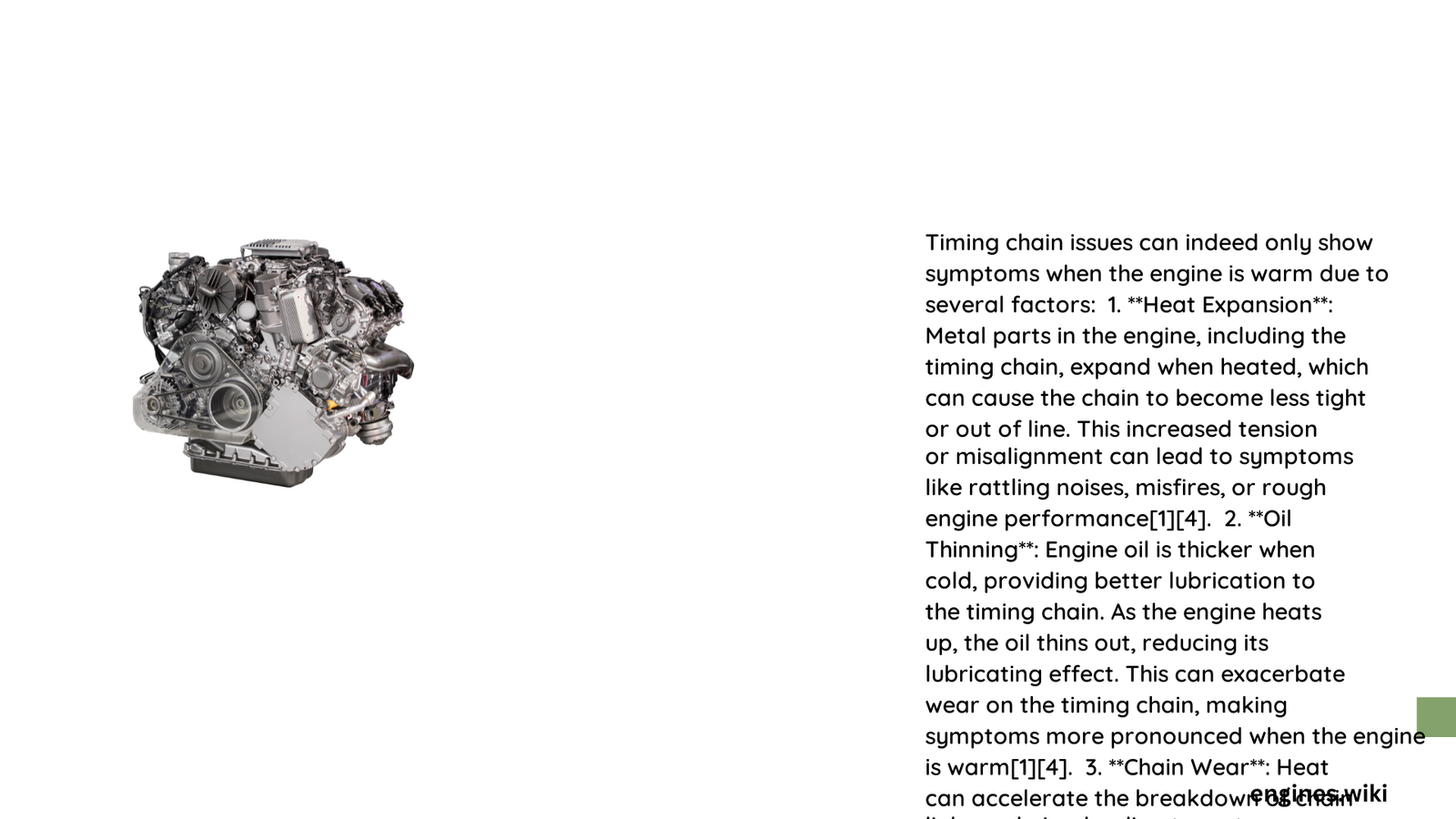Timing chain symptoms can be elusive, often revealing themselves only when an engine reaches its optimal operating temperature. Vehicle owners frequently experience intermittent noises, performance fluctuations, and mechanical irregularities that become more pronounced as engine heat increases. Understanding these temperature-related manifestations is crucial for early detection and preventing potential catastrophic engine damage.
What Causes Timing Chain Symptoms to Emerge at Higher Temperatures?
How Do Metal Expansions Affect Timing Chain Performance?
When an engine heats up, metal components undergo thermal expansion, creating unique mechanical interactions:
| Temperature Range | Potential Timing Chain Behavior |
|---|---|
| 20-60°C | Minimal symptom manifestation |
| 60-90°C | Increased likelihood of noise/wear detection |
| 90-110°C | Maximum symptom potential |
Key Mechanical Factors
- Thermal Expansion Dynamics
- Metal components expand differently
- Timing chain tension fluctuates
-
Lubrication viscosity changes
-
Oil Viscosity Impact
- Reduced oil thickness at higher temperatures
- Decreased lubrication effectiveness
- Increased friction between chain components
What Specific Symptoms Indicate Timing Chain Issues?
Vehicle owners should monitor these critical warning signs:
- Unusual rattling sounds during engine warm-up
- Intermittent engine misfires
- Reduced overall engine performance
- Unexpected power loss
- Check engine light activation
How Can Drivers Diagnose Potential Timing Chain Problems?
Recommended Diagnostic Approaches
- Professional Inspection
- Comprehensive mechanical assessment
- Specialized diagnostic equipment
-
Thermal imaging analysis
-
DIY Preliminary Checks
- Listen for distinct metallic rattling
- Monitor engine performance variations
- Track symptom frequency and intensity
What Are the Potential Consequences of Ignored Timing Chain Issues?
Risk Progression:
– Minor noise → Component wear → Potential catastrophic failure
– Estimated repair costs: $500 – $2,500
– Potential engine replacement: $3,000 – $7,000
When Should Immediate Action Be Taken?
Critical Warning Signs:
– Persistent rattling beyond 5-10 minutes of engine operation
– Consistent performance degradation
– Visible metal debris in engine oil
– Unusual engine vibrations
Expert Recommendations

Automotive professionals universally recommend:
– Regular maintenance checks
– Immediate professional consultation upon symptom detection
– Adherence to manufacturer-recommended service intervals
Conclusion
Timing chain symptoms are complex, temperature-dependent mechanical indicators requiring nuanced understanding and proactive management. While not exclusively manifesting when an engine is warm, these symptoms often become most apparent during elevated operational temperatures.
Reference:
– Automotive Diagnostic Guidelines
– Engine Maintenance Resources
– Professional Mechanic Insights
